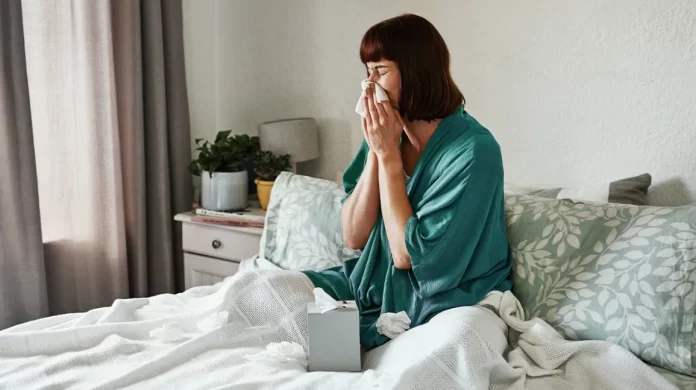Last Updated on March 12, 2024 by admin
Mold allergies are one of the most common types of allergies in the United States. In fact, according to the Asthma and Allergy Foundation of America, up to 50 million Americans suffer from some form of allergy to mold. If you are one of those people, you know just how miserable it can be when mold spores start floating around in the air. In this blog post, we will discuss everything you need to know about mold allergies: what they are, how to identify them, and how to treat them!
Table of Contents
What are mold allergies?
It doesn’t take a genius to figure out what mold allergies are. As the name suggests, mold allergies are allergic reactions to mold spores. When most people think of mold allergies, they think of summer allergies due to the high amount of mold spores in the environment. However, there is more than a single form of mold allergy.
Research shows that there are three different types of mold allergy: seasonal, year-round, and occupational. Seasonal mold allergies are the most common, and they occur when the levels of mold spores in the environment are high, typically during the spring and summer months. Year-round allergies are less common, but they can still occur in people who live in damp or humid environments where mold is present year-round. Occupational allergies are caused by exposure to mold spores in certain occupations, such as farming, construction work, or any job that involves working with organic materials.
Symptoms of mold allergies:
Like every typical allergy, mold allergy has a few generic symptoms. These include sneezing, runny nose, itchy eyes, and congestion. In more severe cases, people can also experience wheezing and difficulty breathing. However, the symptoms of mold allergies can vary depending on the type of allergy you have.
For example, seasonal mold allergies are typically associated with hay fever symptoms like sneezing and a runny nose. On the other hand, year-round mold allergies can cause more severe respiratory problems like difficulty breathing and wheezing. And finally, occupational mold allergies usually cause skin irritation or rashes in addition to the typical hay fever symptoms. In addition, if you have been exposed to mold for a long time, you will develop severe lung and respiratory problems.
Identifying your mold allergy:
If you suspect that you might have a mold allergy, the first step is to visit an allergist for testing. An allergist can determine if you are allergic to mold and, if so, what type of allergy you have.
The best way to test for a mold allergy is through skin prick testing. In this test, the allergist will place a drop of allergen extract on your skin and then make a small prick in the skin. If you are allergic to the allergen, you will develop a raised bump or hive at the site of the prick within 15 minutes. Blood tests can also be done to measure your immune system’s response to specific mold spores; however, these are not as accurate as skin prick tests.
Treating your mold allergy:
Once you have been diagnosed with a mold allergy, the next step is to start treatment. The best way to treat a mold allergy is by avoiding exposure to mold spores as much as possible. However, this can be difficult, especially if you have a seasonal or year-round allergy.
In addition to avoidance, a few medications can help relieve the symptoms of a mold allergy. These include antihistamines, decongestants, and nasal sprays. If you have a severe allergy, your doctor may also prescribe immunotherapy, which involves receiving regular injections of allergen extract over the course of several years.
Living with a mold allergy:
If you have been diagnosed with a mold allergy, it is important to avoid exposure to mold spores. The best way to do this is by staying indoors on days when the mold count is high and keeping your windows and doors closed. You should also use an air conditioner or dehumidifier to remove mold spores from the air in your home. In addition, it is important to clean your house regularly to prevent mold growth. While there is no cure for a mold allergy, it is possible to manage the symptoms and live a normal life.
-Stay indoors on days when the mold count is high
-Keep windows and doors closed
-Use an air conditioner or dehumidifier
-Clean your home regularly
– Take advice from others with the same problem
-Vaccinate against the flu each year.
If you have a mold allergy, there are a few things you can do to make life easier:
- Keep your house clean and free of mold spores by dusting regularly and using a vacuum with a HEPA filter.
- Avoid exposure to outdoor mold by staying indoors on days when the mold count is high.
- Take medications as prescribed by your doctor to help relieve symptoms and prevent serious reactions.
The long-term approach to handling any allergy is avoidance. Avoid what causes your allergies, and you will be good to go. And while environmental molds aren’t easy to avoid, house molds can be cleaned regularly.
Read More: Why Do You Have Allergies at Home?






















